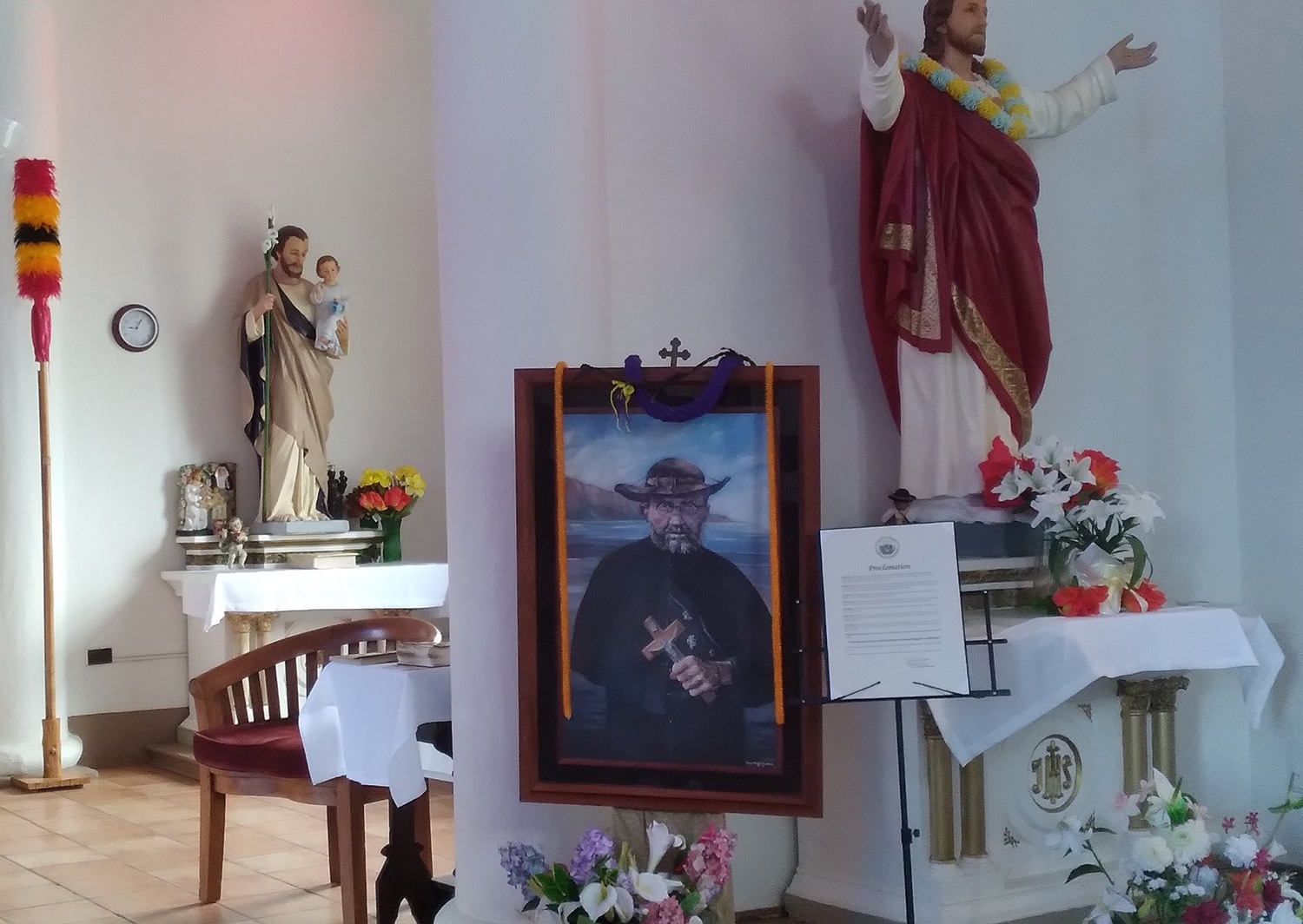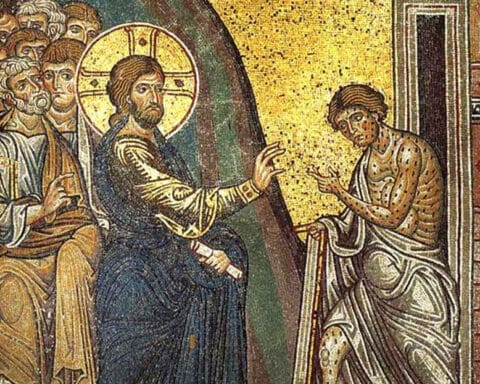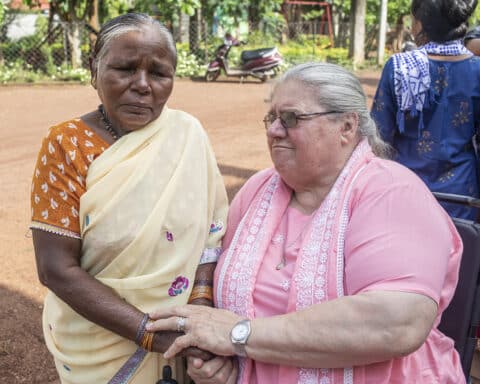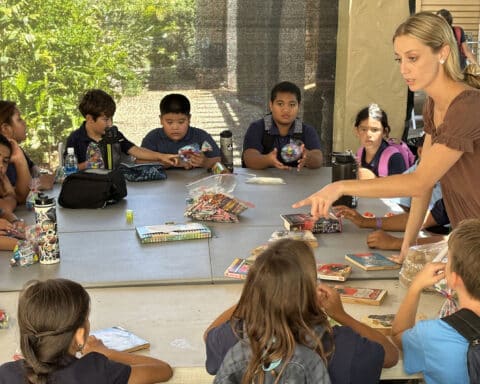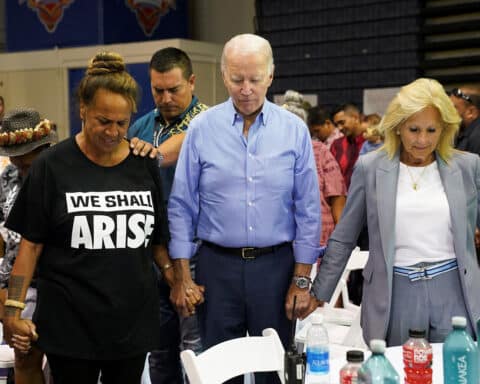KALAUPAPA, Hawaii (OSV News) — “Aloha” isn’t just a greeting. It means the Hawaiian spirit of deeply giving in friendship and deeds, a creed St. Damien de Veuster (born Jozef de Veuster) lived by as he cared for the people he called his “children” suffering leprosy in the 19th century.
One of the last remaining leprosy settlements in the U.S., on the Hawaiian island of Molokai, testifies to St. Damien’s care as eight remaining patient-residents live out their lives.
Leprosy, or “Hansen’s disease,” was thought to be highly contagious and lacked a cure during Father Damien’s years on Molokai, from 1873 until 1889. The Belgian missionary, from the Congregation of the Sacred Hearts of Jesus and Mary, formed a new “ohana,” or family, with the patients. He worked alongside them to plant trees, build houses, channel a water cistern and expand a parish church. He ate with them, shared a pipe and eventually dug their graves.
Father Damien, as he is known, shared their leprosy, too.
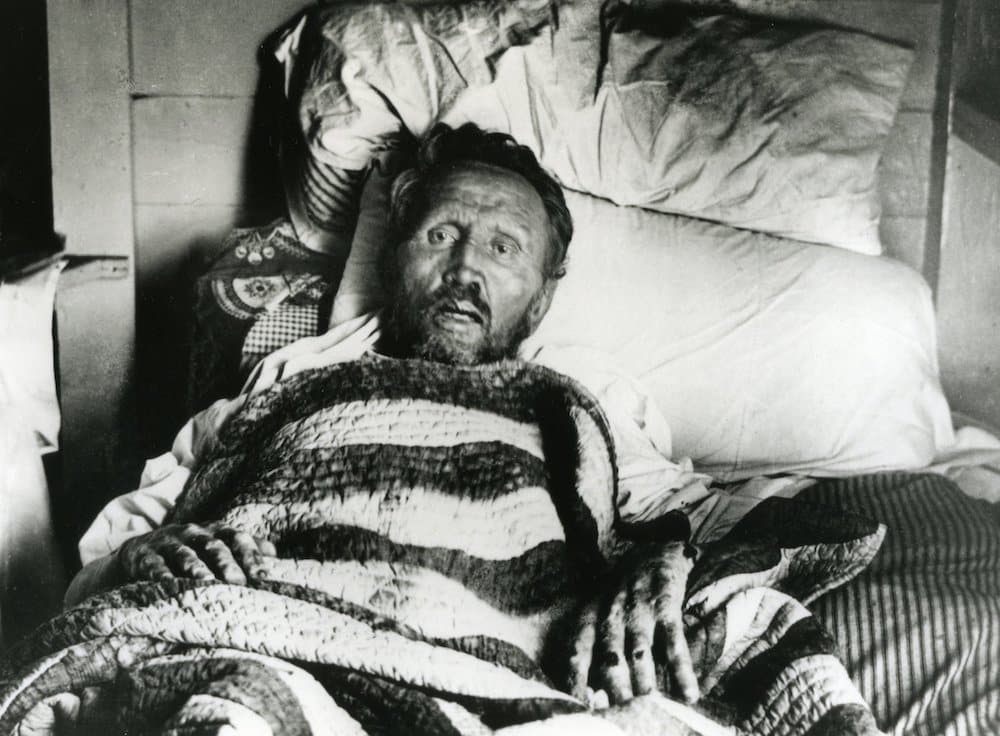
Creating a family
He died from the disease at age 49 on April 15, 1889. During his 16 years in Molokai, Father Damien set up a functioning community and comforted hundreds of women, men and children. His sainthood was affirmed June 4, 1995, when he was beatified by St. John Paul II. He was canonized Oct. 11, 2009, by Pope Benedict XVI.
Today, the Molokai settlement faces a transition that pairs the Diocese of Honolulu with the National Park Service. It’s an arrangement that bridges the future over a past in which Hawaiians taught much about ohana and aloha amid faith in God, said Sister Alicia Damien Lau, a member of the Sisters of St. Francis.
“When the last resident goes,” said retired Superintendent Dean Alexander of the National Park Service, “the buildings will have to tell the story of what happened here.”
This active American leprosy settlement remains isolated. It is home to a solemn tropical silence that nurtures the last eight patients, ages 83-99.
“We don’t say ‘lepers’ here. That’s a no-no,” said Father Patrick Killilea, who like St. Damien is a member of the Congregation of Sacred Hearts of Jesus and Mary, which serves St. Francis Catholic Church at Kalaupapa and at St. Philomena Mission at Kalawao, the two settlements on Molokai’s Kalaupapa Peninsula.
Forced isolation at Kalaupapa ended in 1949, although it took until 1969 for the state policy to officially end. An administrative law was passed allowing those patients to leave who so wished.
“Most did not — this was their home for the past 20, 30, 40 years. Most did not have families outside of Kalaupapa,” said Sister Lau, who works with the residents. “Even though the disease was cured, the patients stay on because this is their home,” Father Killelea added.
The ‘far off’ place
The Kalaupapa Peninsula was the chosen site in 1866, during the reign of King Kamehameha V, for a quarantined colony in the Kingdom of Hawaii. The Hawaiian legislature passed a law that allowed the arrest and forcible exile of those found suffering from leprosy. Ships or boats dropped men, women and children on the beach near the first settlement site called Kalawao.
At that point, as today, the far-off peninsula poses one of the most remote locations in Hawaii, formed by unique volcanic and geologic activity over millions of years. Perpendicular sea cliffs reach 3,000 feet above sea level, some of the world’s tallest. They provided natural prison walls, preventing escape.
Then 33, the stout, strong Father Damien volunteered to serve the feared exiles in 1873. His aim was to create a community for those with few champions.
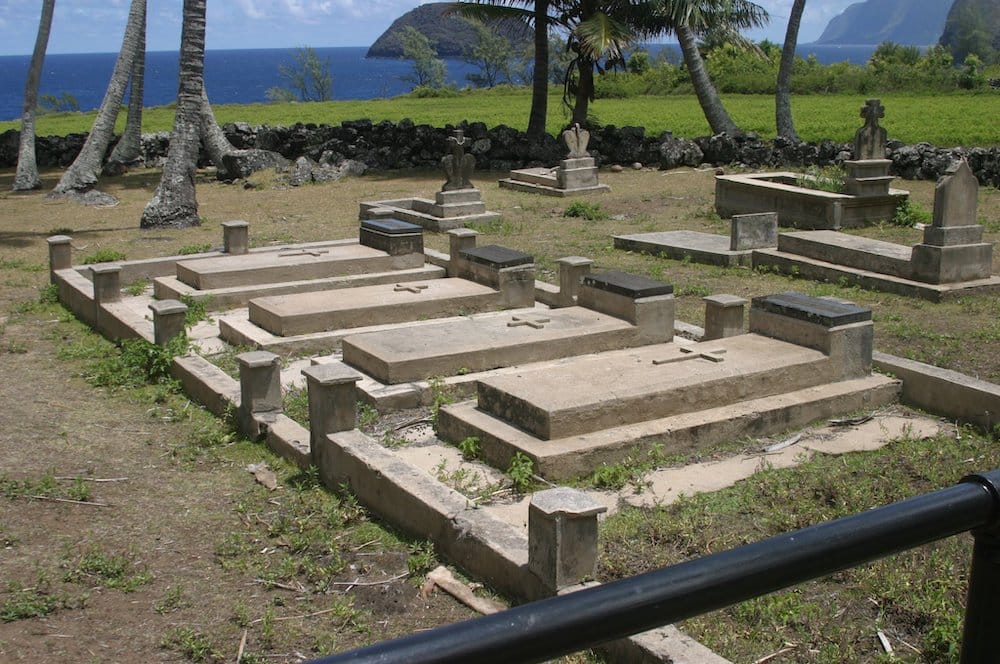
The saint’s gifts were equal to the work, according to Father Killilea, who takes visitors and pilgrims on excursions to show the settlements and tell the stories. Father Damien was a natural leader, appointing patients who were able to head up building projects — they stacked volcanic rock demarcations around properties to keep the wild hogs out — and with no training in plumbing, he designed a system to bring fresh water to the initial settlement of Kalawao. He attracted helpers, or “kokua,” to the cause Father Killilea said, and managed the work in good health for over a decade before infection set in.
Just before he died, a doctor took Father Damien’s picture. The black and white photo of his disfigured face told the priest’s story perhaps better than any narrative. It was published on the front page of The New York Times and reprinted broadly.
Those who came after Father Damien continued operations at the settlement, which oversaw 8,000 people live and die there over time. As time went on, community-building centered around comfort: a theater, a dance hall, even a bar where people sang Hawaiian songs late into the night.
St. Marianne Cope came during Father Damien’s final days, arriving with six of her sisters in November 1883. Mother Marianne was canonized in 2012 by Pope Benedict XVI, remained 30 years until death took her in 1918. Though she worked tirelessly with the patients, she didn’t contract leprosy. Early on, Mother Marianne told her sisters that under God’s protection, none of them would get leprosy, Sister Lau said, pointing out that to this day, none have. The Center for Disease Control and Prevention states 95% of humans are naturally immune to leprosy, which can be cured with antibiotic treatment.
The Kalaupapa story is a testament to the spirits of aloha, ohana and kokua expressed by Hawaiian people to their fellow man, said Sister Lau.
“One has to realize the majority of the (patients) were Hawaiian,” she said. “They’ve always had a sense of ‘being there,’ helping each other. They formed an ohana, ‘a family.’ That’s the feeling that permeated throughout, and they had so much to give. They give of themselves. Although the disease was feared by many people, the sisters not only took care of their physical needs but the emotional needs from being abandoned, the loss of family, parents, friends, etc., while keeping the Hawaiian culture alive and bringing the Franciscan values of peace and joy to everyone.”
The Kalaupapa settlements’ next role
Due to the settlements’ critical need for historic preservation, the National Park Service created the Kalaupapa National Park in 1980 and leased the peninsula’s land for 50 years. That lease expires in 2030 and is expected to be renewed, Lau said. In the meantime, restoration work is ongoing for several of what remains of the 350 historic buildings.
A formal agreement between the Diocese of Honolulu and the National Park Service sets out terms for protecting and preserving the historical integrity of Catholic structures. Superintendent Nancy Holman said the parks service is looking at what to do with the settlement when the patients are no longer with us and the Department of Health is no longer on site as an active managing partner.
| A Prayer Offered at the Beginning of Each Mass on Molokai: |
|---|
|
Oh God, through your Son, Jesus, we offer you a prayer of praise and thanksgiving before our celebration of the Eucharist. The lives of St. Damien and St. Marianne — the saints of Molokai — are our patrons and special intercessors for the intentions for which we pray. Being blessed to be here on the sacred ground of Molokai, through their example of giving themselves as a witness to love, we pray for the world, especially for the rejected in society and for those in need of our prayers. We pray for ourselves to be joy filled persons with compassion; and we ask to have a willingness to serve the Kingdom in the capacity to which we are able to give. Sts. Damien and Marianne who served the Hansen’s disease patients without any distinction of race or religion help us to reach out in spirit and prayer to create a civilization of love. St. Damien, servant of humanity, pray for us. St. Marianne, mother of outcasts, pray for us. |
“I think there’s a lot of range for future engagement and discovery and partnership with the people of Hawaii,” Holman has said in public talks. Those talks are ongoing, Holman said.
In the meantime, the isolated Kalaupapa Peninsula is the destination for Catholics devoted to Sts. Damien and Marianne. Pilgrims come to walk where the saints walked, to venerate their graves and pray there.
That’s where Father Killilea and Sister Lau make themselves available to others: due to restrictions, visitors cannot go to the island alone. They must have “sponsors” and apply for a visit with the Department of Health, which still administers affairs there. Father Killilea and Sister Lau act as sponsors for pilgrims and others.
Even so, it’s not easy getting there. The only trail down a steep, zig-zagging cliff is closed until further notice. Flying is the only permissible way in and out. The settlement remains almost as isolated now as it was 150 years ago for a young Father Damien.

